calsfoundation@cals.org
Lindbergh Day
aka: Guggenheim Tour
Not long after Charles Lindbergh completed his successful transatlantic flight from New York to Paris, France, he returned to the United States and toured ninety-two cities in forty-eight states. His flight tour began on July 20, 1927, at Mitchel Field in New York, and ended at Mitchel Field on October 23, 1927. His landing in Little Rock (Pulaski County) at the Little Rock Airport (now the Bill and Hillary Clinton National Airport) on October 1 and the following festivities marked one of the biggest events in the city’s history to that point.
Lindbergh’s tour was officially known as the Guggenheim Tour, as it was financed by industrialist and multi-millionaire Daniel Guggenheim. Guggenheim, and his son Harry, were proponents of aviation and established a fund that supported aviation research.
During the Guggenheim Tour, Lindbergh flew a route that took him over many cities. He did not land in every city but circled them so spectators could see the Spirit of St. Louis. His trip to Little Rock started from Muskogee, Oklahoma, where 30,000 people had gathered to see the famous pilot. During Lindbergh’s flight to Little Rock, he circled over the cities of Fort Smith (Sebastian County), Van Buren (Crawford County), and Booneville (Logan County).
Lindbergh was arguably the most famous person in America at the time of his visit to Little Rock, and city officials of Little Rock and North Little Rock (Pulaski County) spared no expense in keeping Lindbergh comfortable and safe. Six Arkansas National Guard units were on duty to provide security upon Lindbergh’s arrival at the Little Rock Airport. According to the Arkansas Gazette, “Six units of the Arkansas National Guard will be on duty within the airport to prevent any efforts to cut the barbed wire entanglements. They will be: Battery H, of Little Rock and Batteries D and E of Russellville, all of the 206th Coast Artillery; Company G, 154th Infantry, Conway; the 154th Observation Squadron, Little Rock, and the State Staff Corps, Little Rock.” In addition to the Arkansas National Guard units, fifty American Legion members were deputized to provide security inside the airport. Another 100 deputies and special deputies were on duty just outside the airport.
The Spirit of St. Louis, with Lindbergh at the controls, touched down at 2:00 p.m. on October 1 at the Little Rock Airport. After he landed, Lindbergh parked his plane inside a hangar that had a door open on one end so his historic airplane was visible to curious onlookers.
After Lindbergh exited his airplane, he entered a car that took him directly to the parade route. The parade began about 2:25 p.m. in Little Rock and then crossed the Arkansas River into North Little Rock for several blocks, and then back to the Little Rock side. Arkansans turned out by the thousands to see Lindbergh. According to the Arkansas Democrat, “Not less than 75,000 men, women and children, lining the streets over which the honored guest of the city was guided by the reception committee, responded to the youthful colonel’s salutations with gasps, greetings, cheers and then louder shouts of joy.” The writer went so far as to state that “Arkansas gave Col. Charles A. Lindbergh a reception greater than any ever accorded another man, including two presidents who have visited Little Rock.”
The parade ended at the Arkansas State Capitol, an hour after it had started. Lindbergh gave a short speech at the capitol and promptly left for his hotel room at the Marion Hotel. He gave an interview to newspaper reporters in his room about 4:30 p.m. That night, he attended a banquet in his honor at the Albert Pike Memorial Temple.
The toastmaster for the evening event was Alfred G. Kahn, president of the Little Rock Chamber of Commerce. Bishop H. A. Boaz gave the invocation. Moorhead Wright, president of the Little Rock Chapter of the National Aeronautic Association, welcomed Lindbergh to Little Rock. An address followed by Major J. Carroll Cone, governor at large of the National Aeronautic Association. Lindbergh was the last to speak.
In his speech, Lindbergh focused on the safety of airplane travel, saying, according to the Democrat, “Aviation has progressed more rapidly during the comparatively few years of its existence than any other kind of transportation. At first it seemed that airplanes would be of no commercial benefit, but later it was admitted that airplanes might be useful as a military weapon.”
A fine brochure was printed on heavy paper for the occasion, with Lindbergh’s picture on the front page, the program for the two speaking engagements on the second page, the evening menu on page three, and a tribute to Lindbergh on the back page.
In an interview with reporters, Lindbergh pointed out that his airplane, the Spirit of St. Louis, had traveled more than 25,000 miles and that the engine had not been overhauled. He said that he believed that his plane’s engine should be able to travel another 75,000 miles and should last for 1,000 flying hours.
Lindbergh spent most of the next day (October 2) resting at the Marion Hotel, with the exception of undergoing a physical examination by the flight surgeon of the 154th Observation Squadron of the Arkansas National Guard. According to the Gazette, “Captain Phillip Thomas Jr., the flight surgeon, said that details of the examination’s results still are to be worked out, but that those points that had been tabulated late last night showed the transatlantic flier’s conditions to be far above the average and higher in grade than those of any other flier he has tested during his career as flight surgeon.”
According to Lindbergh’s flight log, he departed Little Rock for Memphis, Tennessee, on October 3. The world’s most famous aviator had included Little Rock on his tour, something Arkansans appreciated. In regard to his speech at the capitol, an unnamed writer for the Arkansas Democrat noted, “Thoughts of aviation itself, however, probably did not enter the minds of the worshipful thousands until Lindbergh stepped before the loud speaker on the temporary platform in front of the statehouse. Up to that time, the largest crowd ever to assemble in Little Rock for one event had devoted itself solely to efforts to get a glimpse of the hero of the day.”
For additional information:
“30,000 Greet Lone Eagle at Muskogee Stop.” Arkansas Democrat, October 1, 1927, p. 1A.
“Charles Lindbergh an American Aviator: The Guggenheim Tour.” http://www.charleslindbergh.com/history/gugtour.asp (accessed June 13, 2018).
“City to Welcome Lindbergh Today.” Arkansas Gazette, October 1, 1927, pp. 1A, 20A.
“Lindbergh Physically Fit for Role of Hero of Air.” Arkansas Gazette, October 3, 1927, p. 1A.
“Lindy’s Ovation is Greatest Seen Here.” Arkansas Democrat, October 2, 1927, pp. 1A, 3A.
Wallace, Jerry. “Colonel Charles Lindbergh: The Conqueror of the Air.” Calvin Coolidge Presidential Foundation, August 4, 2014. https://coolidgefoundation.org/blog/colonel-charles-lindbergh-the-conqueror-of-the-air/ (accessed on June 13, 2018).
Jimmy Bryant
University of Central Arkansas
 Early Twentieth Century, 1901 through 1940
Early Twentieth Century, 1901 through 1940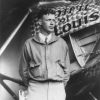 Lindbergh, Charles, First Night Flight of
Lindbergh, Charles, First Night Flight of Recreation and Sports
Recreation and Sports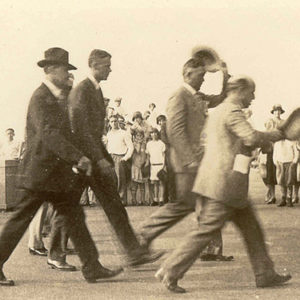 Lindbergh in Little Rock
Lindbergh in Little Rock 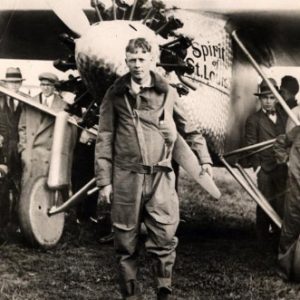 Lindbergh in Paris
Lindbergh in Paris 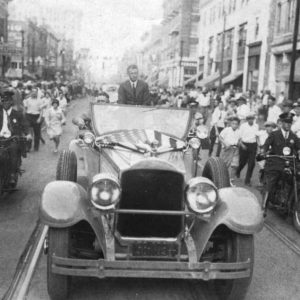 Lindbergh in Little Rock
Lindbergh in Little Rock 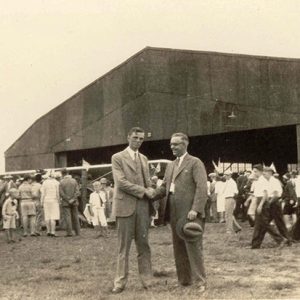 Spirit of St. Louis in Little Rock
Spirit of St. Louis in Little Rock 




Comments
No comments on this entry yet.